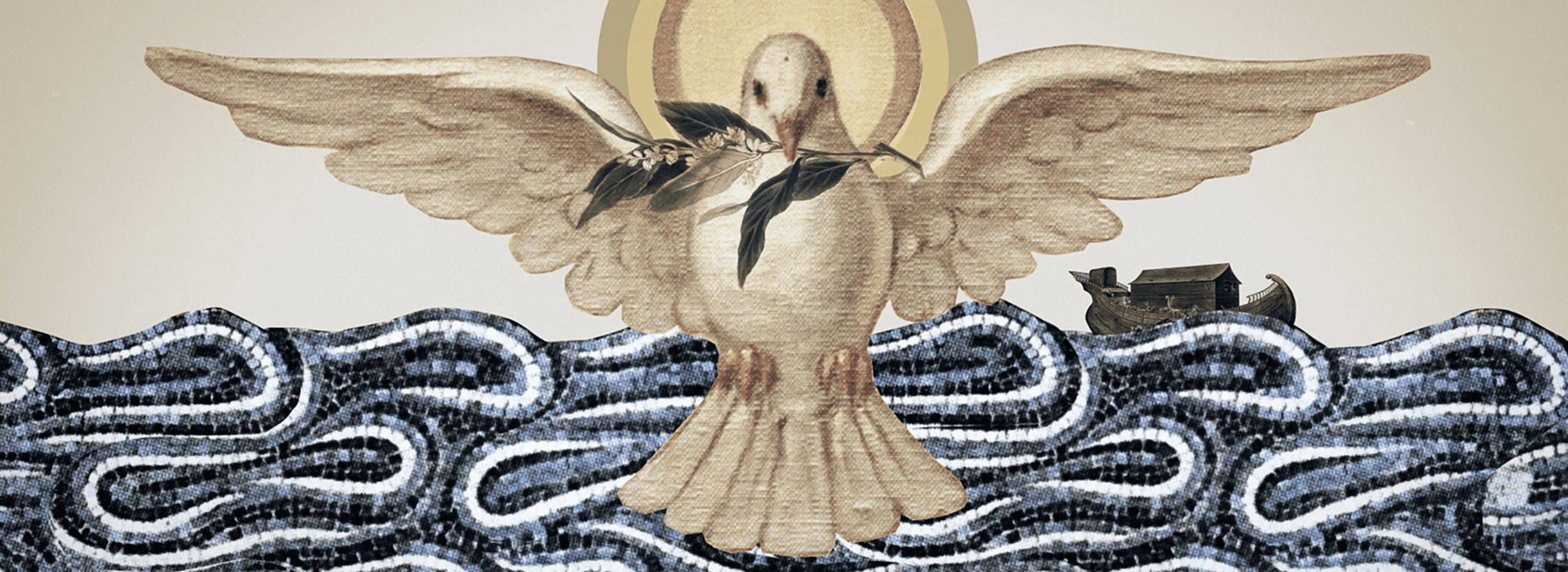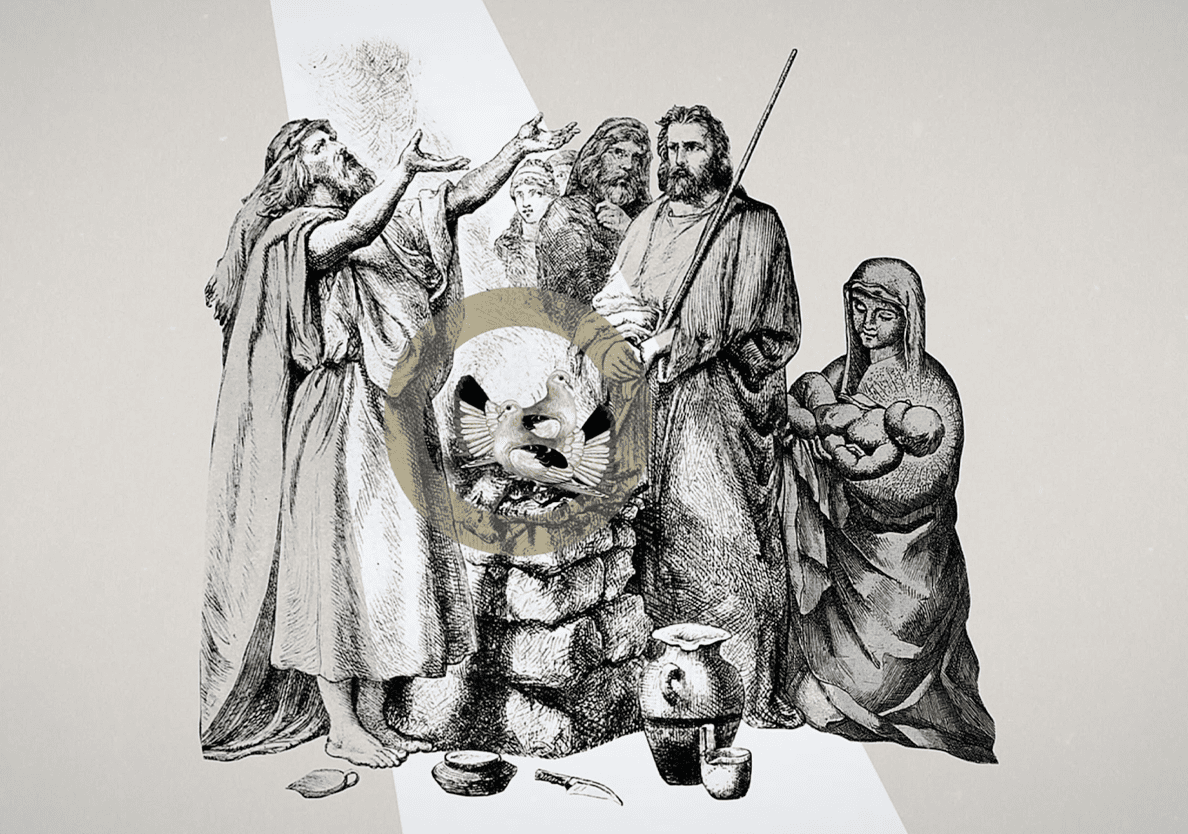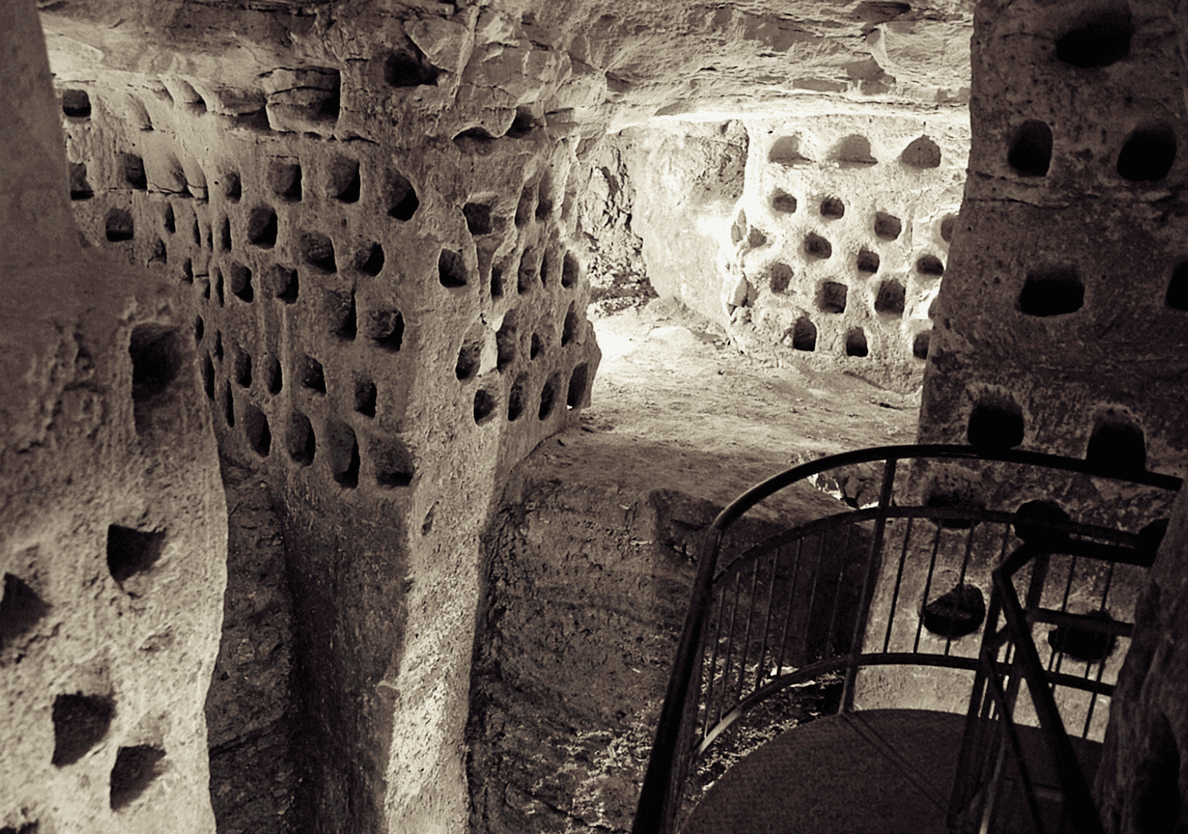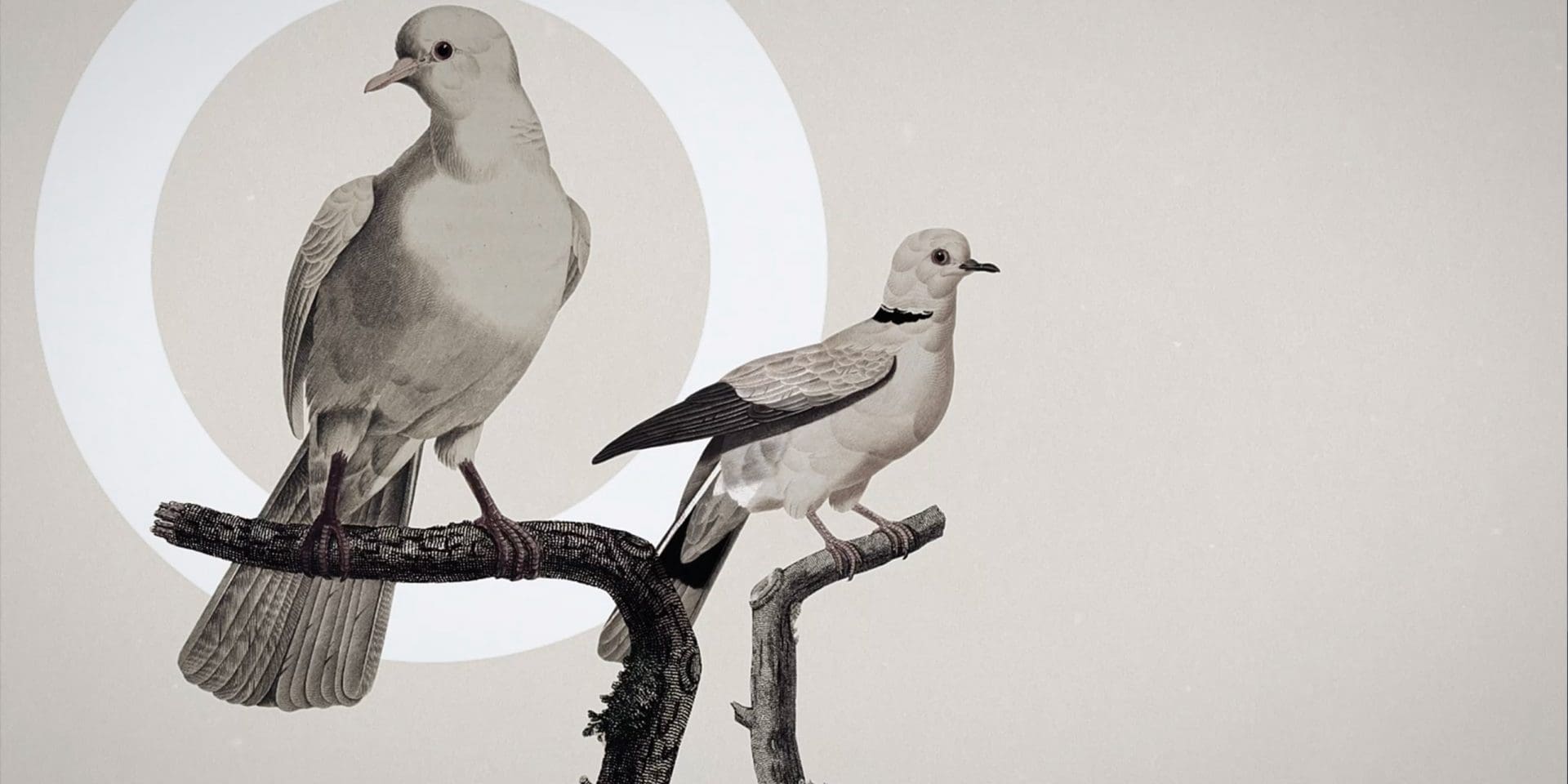The text of the Bible along with the ancient physical remains of the people of Israel and Judah, tell of an interesting relationship with doves and pigeons. The symbolism of the dove has been passed down to us today mainly through Christianity as representing the sacred, specifically the Holy Spirit.
This imagery begins with the very practical use of the dove by Noah in Genesis 8 (Genesis 8:8-12). Noah uses what became a tried-and-true sailor’s practice[1], the releasing of a dove to help locate land. Noah’s dove with its iconic olive branch is still an enduring symbol of peace; its context as a messenger of God’s peace with Noah’s family helps explain its association with the Spirit of God.
This symbolism became rooted deeply within Judaism so that by the time of Jesus, John the Baptist claimed to see the Holy Spirit descending in bodily form like a dove onto Jesus (Matthew 3:16; Mark 1:10; Luke 3:22; John 1:32). Because of this, the dove, along with its watery friend the fish for its own reasons, became enduring early Christian symbols.[2]

Looking back into the Hebrew Scriptures, Judaism had come to understand the reference to the Spirit of God hovering over the primordial waters in Genesis 1:2, to be connected to the hovering or flying of a dove.[3] The mournful cooing sounds of doves and pigeons, as well as their flight and nesting patterns also find Biblical usage in the prophets (Hosea 7:11, 11:11; Isaiah 38:14, 59:11; Ezekiel 7:16; Nahum 2:7; Matthew 10:16). And to the famous lovers of Song of Songs, dove proved a faithful pet name.
Practically speaking, doves were not all pet names and symbols; they were an integral part of the sacrificial worship of God. Doves and pigeons were acceptable burnt offerings (Leviticus 1:14-17) and could stand in the place of a more expensive sin offering (Leviticus 5:7-10; 12:6-8; 14:22-30; 15:14-15, 28-30; Numbers 6:9-11).[4] We see this in practice with Mary and Joseph’s sacrifice after Jesus’ birth, they brought 2 doves, one replacing a more expensive lamb for their sin offering and one as the prescribed burnt offering (Luke 2:22-24).
“Judaism had come to understand the reference to the Spirit of God hovering over the primordial waters in Genesis 1:2, to be connected to the hovering or flying of a dove.”
This sacrificial usage is backed up by the archaeological discovery of dovecote towers in and around Jerusalem, referred to as columbaria. There have been 3 tower ruins explored in the Kidron Valley quite close to the Temple Mount, there have been 40 discovered around Jerusalem and hundreds in the rest of Israel.[5] The Kidron Valley towers no doubt serviced the dove sellers whom Jesus saw fit to drive out of the Temple complex (Matthew 21:12; Mark 11:15; John 2:16).
Studies analyzing the waste of the city has discovered a large amount of dove/pigeon bones from sites near the Temple, and almost none in the residential areas, pointing clearly to their popular use as a sacred offering.[6] Most of the remaining columbaria date to the Hellenistic and Early Roman periods (time of the 2nd Temple), which is not surprising given the rich tradition of dove rearing in Greek society.[7] There is a surviving literary history that is also informative: A Roman farming manual written by Varro describes dove towers, farming and how doves could fetch an amazing price in Rome.[8] Ancient author Pliny the Elder speaks of bird breeders building towers on their roofs.[9] Meanwhile, the Mishnah describes legislation about the location of dovecotes for the purpose of protecting crops and storing practices.[10]


Dove raising towers had features to limit predator access (smooth plaster surfacing, no windows or caged windows, an entrance raised off of the ground) and with their niches could house thousands of birds[11]. Most of the dovecotes in Israel were actually carved into underground manmade, limestone caves. These were clearly more durable than their tower counterparts. Rather than providing religious sacrifices, these columbaria housed doves that were raised for their meat and their droppings, which proved a valuable fertilizer.
The Roman practice of dove keeping eventually spread into France and England in the Middle Ages. Rather than a sign of practicality, however, dove rearing was a mark of wealth and status: only landowners and clergy were allowed the privilege.[12] This led to beautiful and prominently displayed columbaria, some of which can still be spotted dotting the modern landscape.
Judaism and Christianity are also not the only religions to envision the dove as a sacred symbol. Ancient worshippers of the goddess Asherah (aka. Astarte and later Dianna/Athena) used the dove as one of her symbols. Interestingly, small clay shrines found in Iron Age Israel and Judah display Asherah worship and nearly always contain a dove shown resting on the top of the shrine.[13] One example from the island of Cyprus even has carved out dovecotes all over it[14] – testifying to just how ancient the practice of dove rearing really was.

Corie Bobechko is a daily co-host, speaker, and writer of Bible Discovery. She also hosts a YouTube channel that shows how history and archaeology prove the Bible. Her heart for seekers and skeptics has led her to seek truth and share it with others. Corie also has a Bachelor of Theology from Canada Christian College.
[1] Released birds would show the way toward land, this practice has recorded use up until the 19th century in the ANE
Willette, Dorothy. The Enduring Symbolism of Doves, Bible History Daily. January 5, 2020.
https://www.biblicalarchaeology.org/daily/ancient-cultures/daily-life-and-practice/the-enduring-symbolism-of-doves/
[2] Willette. Clement of Alexandria, 2nd century AD encouraged the usage of these symbols.
[3] From Babylonian Talmud. Willette, Dorothy. Enduring Symbolism of Doves, Bible History Daily. Jan. 5, 2020. https://www.biblicalarchaeology.org/daily/ancient-cultures/daily-life-and-practice/the-enduring-symbolism-of-doves/
[4] Note that this is not the cheapest option: verse 11-13 says that if a bird could not be afforded, fine flour (a tenth of an ephah which is likely around 3.5 pounds or 1.6 kilos) was acceptable.
[5] Zissu, Boaz. “This Place Is for the Birds,” Biblical Archaeology Review 35.3 (2009): 30, 32, 35–37, 66. https://www.baslibrary.org/biblical-archaeology-review/35/3/7
[6] Tercatin, Rosella. Bird Study Backs Bible: Pigeons, Doves Sacrificed inn Ancient Jerusalem. Jerusalem Post, June 17, 2020.
[7] Zissu.
[8] Zissu.
[9] Zissu.
[10] Zissu.
[11] Zissu.
[12] Zissu. and Morton, Ella. Pigeon Towers the Rise and Fall of a 17th Century Status Symbol. https://slate.com/human-interest/2015/09/the-history-of-the-dovecote-is-all-about-birds-and-status.html
[13] Willette.
[14] Willette.






